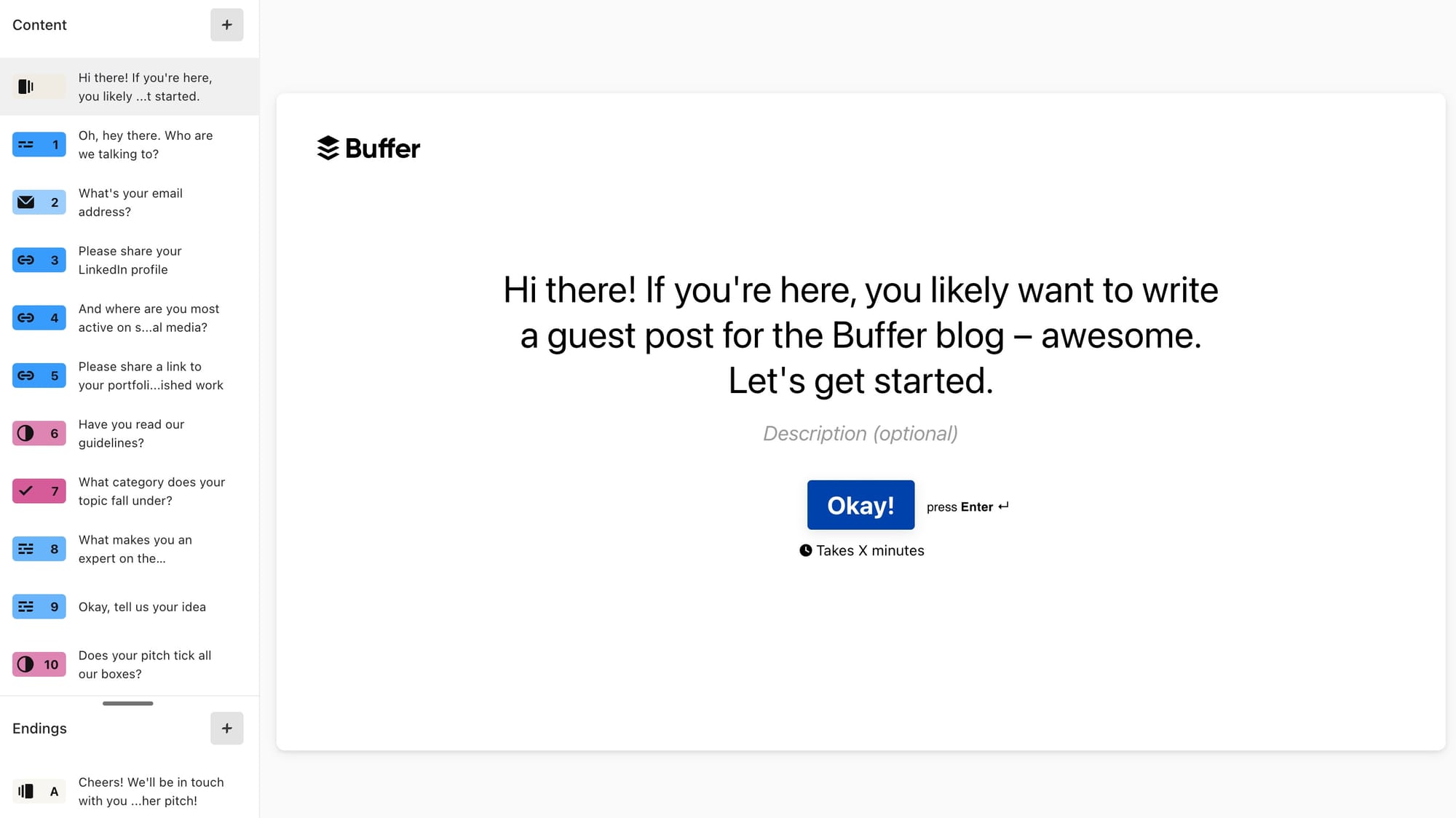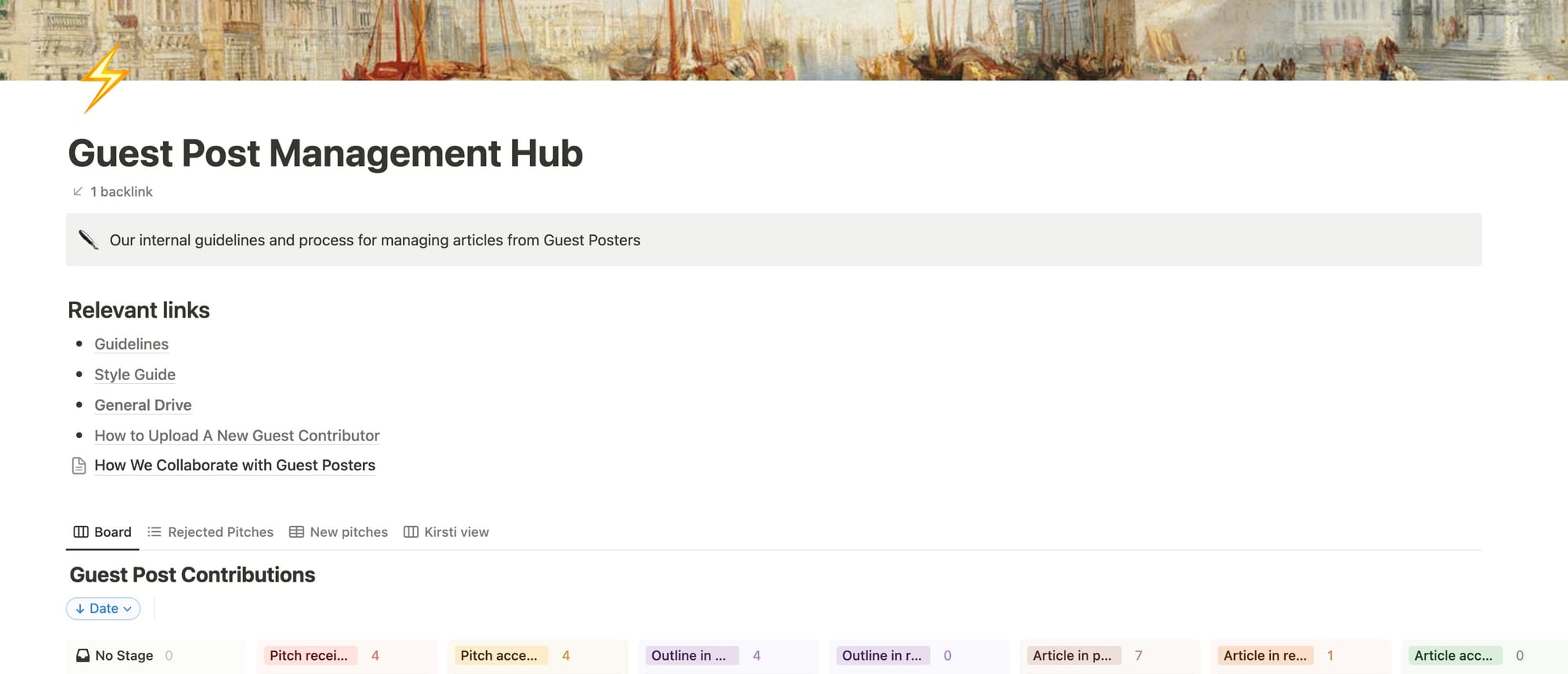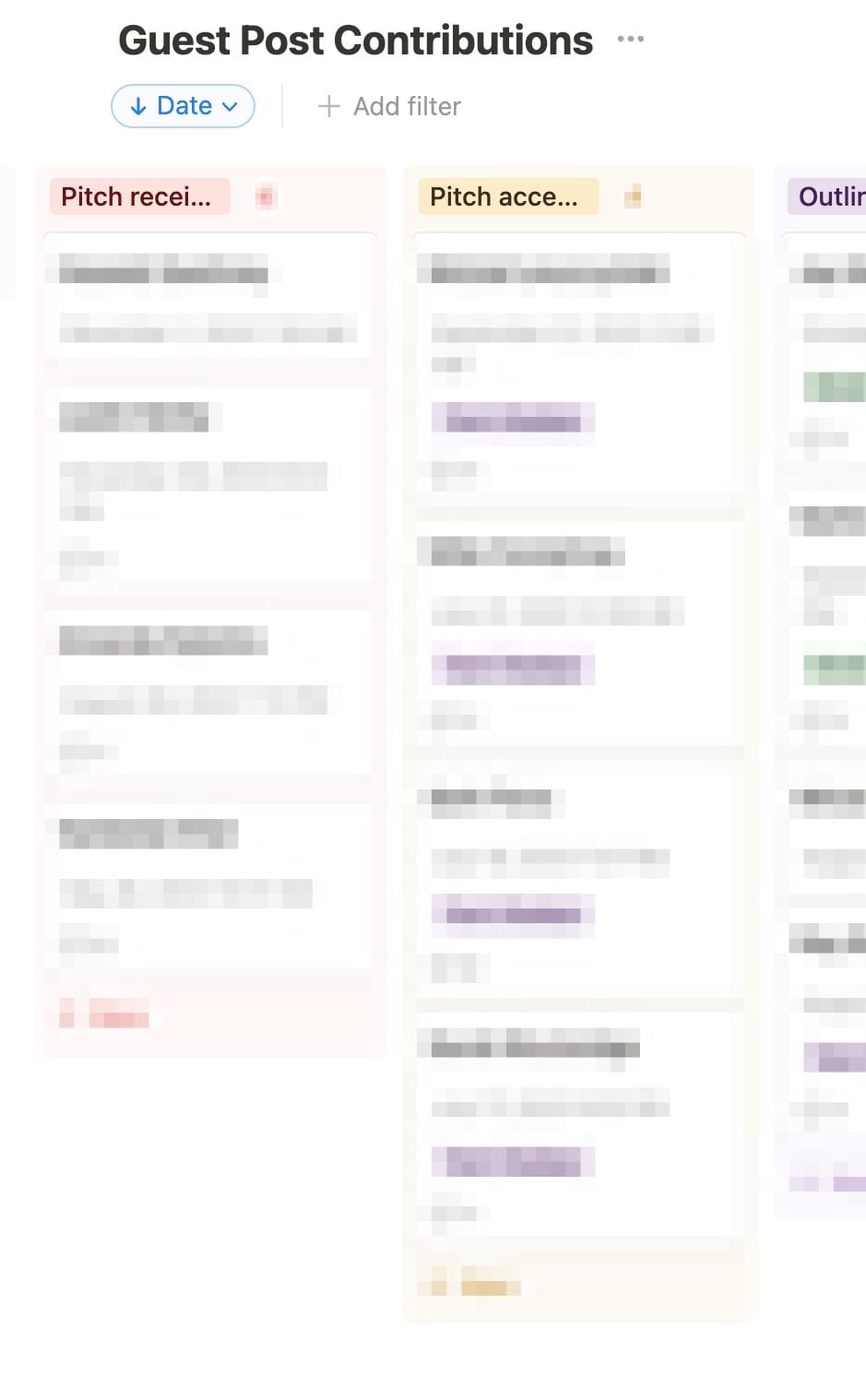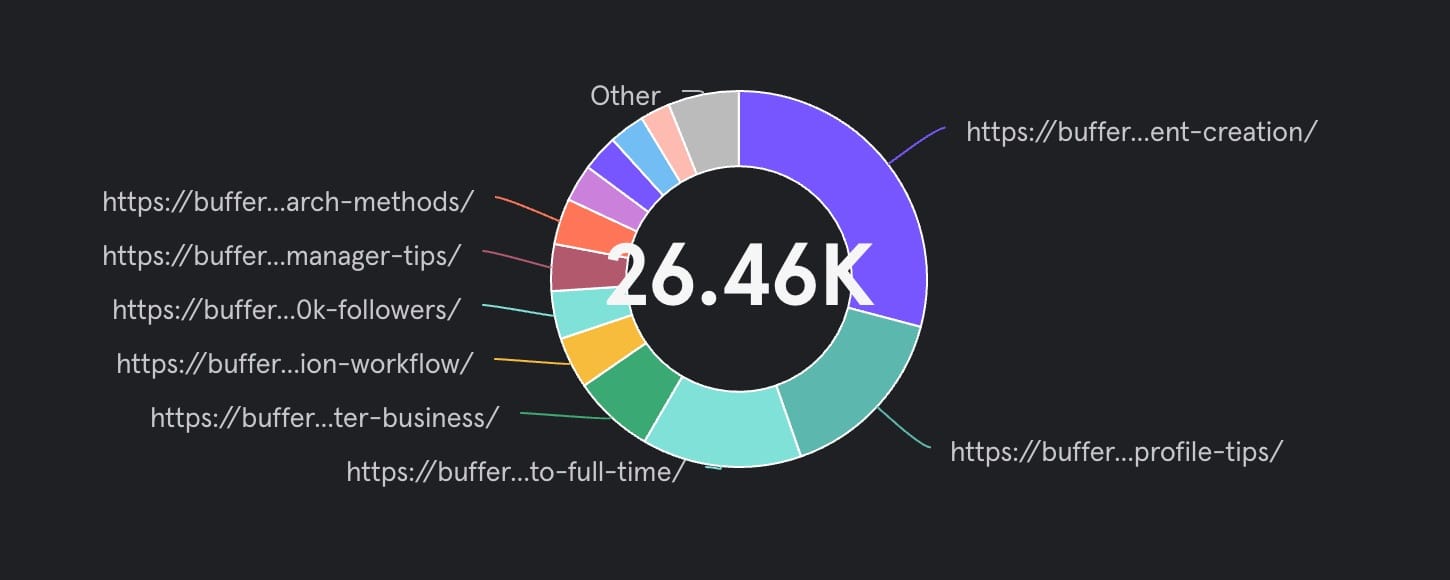
How We Built Our Guest Posting Program
In this article, I share how the Buffer Guest Posting Program came to be.
Content Writer @ Buffer
Six months ago, we noticed an interesting phenomenon. Each week, we (the Content team) would receive overflowing inboxes filled with requests to post articles on the Buffer blog. This was everywhere, from our emails to our LinkedIn accounts.
Usually, we’d pay these messages no mind – guest posts just weren’t a part of our content strategy. So what changed?
Well, we were also understaffed at the time and looking for ways to increase our content output. It felt like the right time to reconsider and ask ourselves: what if we set up a guest posting program?
Now, this isn’t a new thing to the Buffer Content team – there’s precedent. In 2012, we regularly had writers like Matt Ragland share their unique perspectives on the blog.
Over time, this practice changed as we leveled up as a team and became more focused on content goals and we moved away from working with guest authors because of the editing time it took. And, of course, there’s a nearly decade-long gap between then and now, so we also faced the unique challenge of figuring out how to update that old program for today’s Internet.
Still, the idea was taking shape, and in a few weeks, the Guest Posting Program was born, to rousing success. We’ve published 17 guest posts that have brought in over 26,000 pageviews to the blog, with some pieces performing as well as in-house content. We’ve also had much success from the initial article announcing the program, bringing in over 45,000 pageviews and 350 signups.
You might be on a Content team facing the same questions we faced while developing the program. So, in this article, I share how the Guest Post Program came to be and how we’re thinking about its future.
Conducting research and setting benchmarks
We dove into the best practices of successful guest posting programs. Our research wasn’t just about setting rules; it was about understanding how to define our goals and create something beneficial for us and our writers.
In crafting our guest posting program, we turned to industry-leading Content teams for inspiration. Guest posting resources like Convertflow, Shopify, and Zapier offered diverse approaches tailored to their unique audience and brand voice.
We also sourced advice from our network of Content professionals, which boiled down to a few key tips that have informed how we approach the program.
- Defining goals: We set clear goals for guest posts so we knew what to reject or accept from the start. Ultimately, we decided that we’re after more diverse perspectives to share with our audience and high-quality content. This clarity has helped shape our approach to the program.
- Prioritizing expertise and experience: Our research underscored that quality contributors often come with a price. However, since we didn’t have the budget for paid writers or the luxury of gatekeeping, we’ve clarified that we don’t pay for guest posts but treat them as an opportunity to expose your writing to our existing audience. This means we receive many pitches we can’t publish, but it has helped us maintain the quality we strive for on the blog.
- Streamlined editing and publishing: We created a robust process for submissions, edits, communication, and distribution. Thanks to our strict processes, we’ve been able to publish the strongest content out of all the pitches we receive. Strong pitches and post examples have become crucial in guiding contributors toward our standards.
- Starting small: Initially, we reached out within our networks for high-caliber contributions. This helped us set a benchmark for quality and expertise before scaling up. We plan to standardize this process and repeat it more frequently to get quality writers in the door.
These insights were instrumental in developing a guest post program that was not just a submission portal for random pitches but a platform for valuable, expert-driven content.
Setting up guidelines and FAQS
After conducting the research, we used the information we gathered to outline the elements of the program.
First, we repurposed our existing blog guidelines and style guide. This is because changing our style for guest posters would clash with our need for great content similar to what our readers would expect on the blog.
In our Guest Posting guidelines, we share information about:
- Post length
- Voice, tone, and style
- Mechanics around emoji usage and capitalization
- The type of content we’re looking for – and what type of pitch is most likely to be accepted. We’ve since included examples of great pitches.
We also developed some FAQs that might come up, such as “What should I write for the Buffer blog?” and “What does a typical pitch look like?” We also included guidance on our audience categories and the anticipated timeline for working with us.
Setting these guidelines has helped us internally know when to reject a pitch outright. However, we leave room for intuition when pitches that don’t fit our guidelines still feel like our audience will love them.
Choosing tools and automating processes
Automation has been instrumental in the process of developing the Guest Posting Program. We use a few tools to collect and manage guest posts.
- Submissions are sent in Typeform. We collect names, contact information, and the pitch.

- These submissions are then sent through Notion, through an integration with Typeform that was fairly easy to set up.

- Communication is handled with a mix of Gmail and Zapier. We send acceptance emails manually and automate rejection emails because of the sheer scale of pitches we receive. These emails detail potential fixes and leave room for new pitches.

- Once we’ve accepted a pitch, we create a folder in Google Drive for the writer to send their outlines and articles. All content is expected to be shared through Google Docs.
From acceptance, every aspect of the editorial process is handled manually, as we send emails back and forth till an article is fully formed and ready for publishing.
Determining the review and selection process
We are strict with our standards, but the right posts get through – so if you have a good pitch and experience with writing, your chances of getting published on our blog are high.
We prioritize content that shares a first-person experience with the topic. So, if you’re pitching to us about growing on Instagram, there needs to be proof attached for us to move forward. Alternatively, a great pitch aggregates information from several sources to create a cohesive, valuable piece of content.
We have two categories in Notion for working through pitches:
- Pitch received: This is where Typeform sends all the pitches we receive, made possible through a handy and easy-to-setup integration. I’ll usually parse through the pitches on this list for gems every other day to keep up with the new submissions, then share them with the team.
- Pitch accepted: If we agree that a pitch looks good enough to move forward, this is the next stage for it.

Reviewing the articles is quite similar to how we operate as a Content team. Our main internal communication tool is Slack, where we’ll share new updates from guest posters.
Between Kirsti (Lang, a Content Writer on the team) and I, we select which pitches we’d like to handle and move forward with communication from there with our team lead, Hailley Griffis. We also loop in our social media manager, Mitra Mehvar, for social content.
We work in six stages after accepting a pitch:
- Outline in progress: We request an outline that will make up 30 percent of the final article. This allows us to see what direction the writer plans for their article and make corrections before they get too deep into working on the post. Once we receive an outline, we move it to the next stage.
- Outline in review: This is where outlines we’ve received wait while we review them. Although we rarely have to turn a post back at the outline stage, it happens enough that keeping these items here is a good practice.
- Article in progress: Once an outline has been accepted, we move on to the drafting phase, when the writer is asked to share a date when they will have their article to us.
- Article in review: This is where articles are moved once we start editing them. We’ll usually tag each other in Slack with updates about new articles that have been added to the Google Drive folders of any writer. We very rarely have to reject fully formed articles, as we’ve usually done several checks.
- Article accepted/scheduled: At this stage, all proofreading and editing are complete, so we schedule it according to our content calendar.
- Article published: The last phase is for published articles, where all the content that has gone out on the blog sits.

Formalizing the process this way allows us to see the progress of all the content coming in on one dashboard. This way, we can spot gaps in communication and request updates in case someone has been missed (which happens all the time on a team as small as ours).
Results so far
We’ve been running the Program long enough to have some interesting results. Here are some of the top metrics so far.
- We’ve received 606 pitches to our submission form in 6 months.
- The article sharing the details about how to pitch and submit has brought in more than 45,000 page views in organic traffic and contributed to over 350 signups.
- We’ve published 17 guest posts that have brought in over 26,000 pageviews to the blog.

All in all, the guest post program has been incredibly valuable to us as a team and to our audience.
Some of our favorite pitches and guest posts so far
We’ve gotten enough pitches and published enough posts that we’ve been able to identify which ones are likely to be hits with our audience. Here are some of our favorites.
- Anna Burgess Yang: Anna wrote the first guest post we ever published, and there’s a reason we moved so fast. She provided the right combination of information about herself (her expertise) and the details about what she would write (the pitch). Read her article here.
- Akshita Sharma: With 7,000 pageviews to date, Akshita has written the top-performing blog post of the guest post program. While her pitch wasn’t driven by personal experience, it still ticked two other boxes: audience relevance, and we hadn’t written about it before. Read her post here.
- Matt Giaro: Matt’s pitch was simple and succinct while telling us exactly what to expect from his article – and he delivered. His article has brought in over 1,000 page views to the blog so far. Read it here.
We’re keeping this up next year
Going forward, we want to improve the quality of the content from the guest post program. In 2024, we’re looking to publish at least one guest post a week. In line with this goal, we’ll also be increasing the strictness of our editorial process, ensuring that only the best articles make their way through to our content calendar.
Do you want to write for us? Take a look at our guidelines, then submit your pitch!
Try Buffer for free
140,000+ small businesses like yours use Buffer to build their brand on social media every month
Get started nowRelated Articles

Sending ads by mail may seem like a thing of the past, but this marketer thinks it’s a surprisingly effective approach for e-commerce brands.

Learn how to leverage AI social media content creation tools and save valuable time in your social media marketing efforts.

With the newsletters on this list, you'll be able to stay on top of all developments in social media and learn from amazing experts